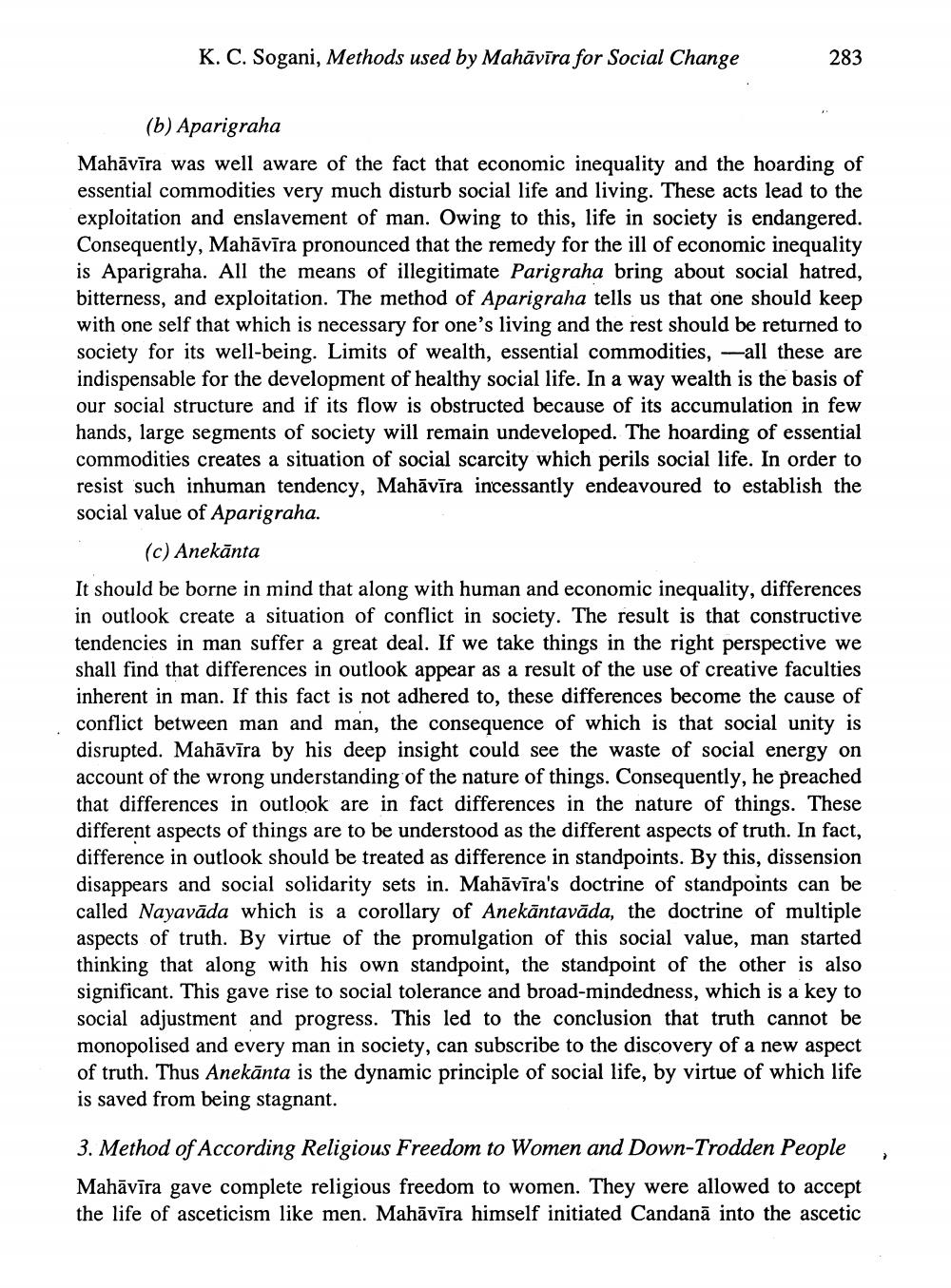________________
K. C. Sogani, Methods used by Mahavira for Social Change
283
(b) Aparigraha
Mahavira was well aware of the fact that economic inequality and the hoarding of essential commodities very much disturb social life and living. These acts lead to the exploitation and enslavement of man. Owing to this, life in society is endangered. Consequently, Mahāvīra pronounced that the remedy for the ill of economic inequality is Aparigraha. All the means of illegitimate Parigraha bring about social hatred, bitterness, and exploitation. The method of Aparigraha tells us that one should keep with one self that which is necessary for one's living and the rest should be returned to society for its well-being. Limits of wealth, essential commodities, all these are indispensable for the development of healthy social life. In a way wealth is the basis of our social structure and if its flow is obstructed because of its accumulation in few hands, large segments of society will remain undeveloped. The hoarding of essential commodities creates a situation of social scarcity which perils social life. In order to resist such inhuman tendency, Mahāvīra incessantly endeavoured to establish the social value of Aparigraha.
(c) Anekänta
It should be borne in mind that along with human and economic inequality, differences in outlook create a situation of conflict in society. The result is that constructive tendencies in man suffer a great deal. If we take things in the right perspective we shall find that differences in outlook appear as a result of the use of creative faculties inherent in man. If this fact is not adhered to, these differences become the cause of conflict between man and man, the consequence of which is that social unity is disrupted. Mahāvīra by his deep insight could see the waste of social energy on account of the wrong understanding of the nature of things. Consequently, he preached that differences in outlook are in fact differences in the nature of things. These different aspects of things are to be understood as the different aspects of truth. In fact, difference in outlook should be treated as difference in standpoints. By this, dissension disappears and social solidarity sets in. Mahāvīra's doctrine of standpoints can be called Nayavada which is a corollary of Anekantavāda, the doctrine of multiple aspects of truth. By virtue of the promulgation of this social value, man started thinking that along with his own standpoint, the standpoint of the other is also significant. This gave rise to social tolerance and broad-mindedness, which is a key to social adjustment and progress. This led to the conclusion that truth cannot be monopolised and every man in society, can subscribe to the discovery of a new aspect of truth. Thus Anekänta is the dynamic principle of social life, by virtue of which life is saved from being stagnant.
3. Method of According Religious Freedom to Women and Down-Trodden People Mahāvīra gave complete religious freedom to women. They were allowed to accept the life of asceticism like men. Mahāvīra himself initiated Candană into the ascetic




